Established in the early 1970s, luxury swimming pool specialists Guncast Swimming Pools have been at the forefront of the revolution of the at-home wet leisure suite for nearly 50 years. Integral to the development of industry trends, whilst also responding to the ever-changing, opulent requests of clients, Guncast have travelled the world delivering state-of-the-art pools.
Having witnessed change in every possible aspect of the design, supply and installation of the swimming pool, there are few companies better suited to discuss how the pool industry has adapted over the years.
Charting these changes since the 1970s, design and commercial director at Guncast, Andy Carr, shares his expertise.
1960s-1970s
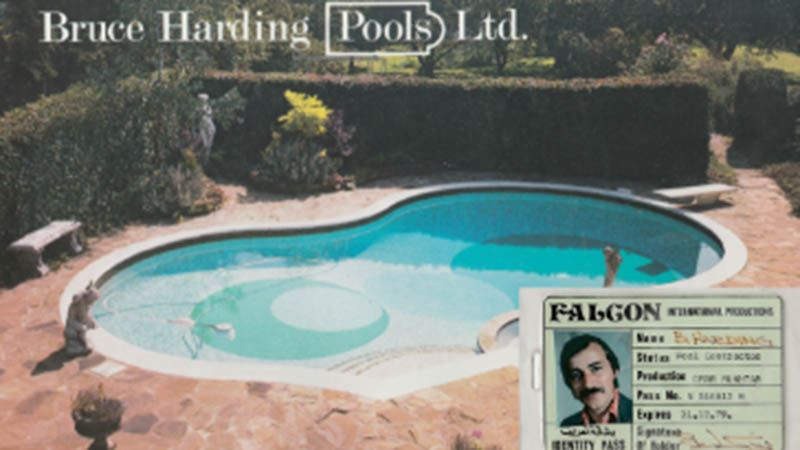 Whilst private swimming pools existed before the 1960s, it was in this decade that private pools boomed in popularity, becoming the must-have accessory for any luxe home. Before the days of quality finishes and the development of today’s construction methods, these were often created by excavating a hole then lining it with steel, before ready mix concrete was unloaded into the hole as labourers carefully spread it up the walls to form the tank. Guncast was regularly installing curved and geometric concrete pools with a marbelite finish, and mosaic band and edge markers were standard. Fully tiled mosaic pools were on the rise, however their high cost meant they were reserved for only the most exclusive projects, for which Guncast built up a strong reputation.
Whilst private swimming pools existed before the 1960s, it was in this decade that private pools boomed in popularity, becoming the must-have accessory for any luxe home. Before the days of quality finishes and the development of today’s construction methods, these were often created by excavating a hole then lining it with steel, before ready mix concrete was unloaded into the hole as labourers carefully spread it up the walls to form the tank. Guncast was regularly installing curved and geometric concrete pools with a marbelite finish, and mosaic band and edge markers were standard. Fully tiled mosaic pools were on the rise, however their high cost meant they were reserved for only the most exclusive projects, for which Guncast built up a strong reputation.
1980s
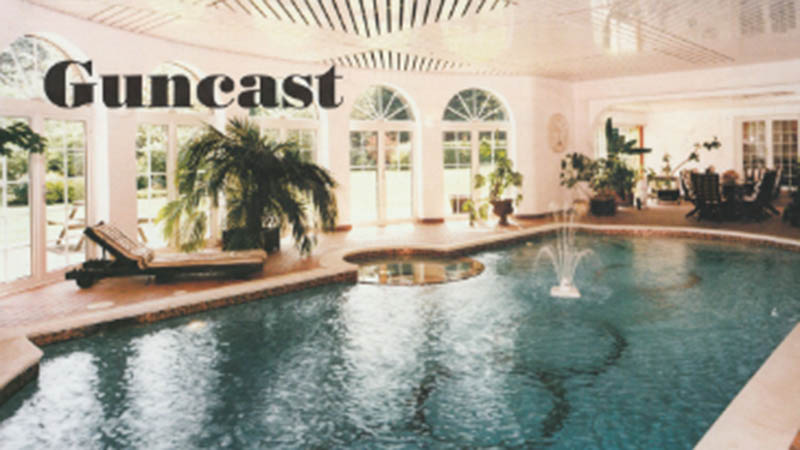 Before spas became commonplace in the UK, Guncast took some of the earliest orders for ‘a corner of the pool that is hot and bubbly’ following the request of clients who had experienced the spa while travelling. This was made possible through the development and mastering of the Gunite method of concreting to form the pool – the system the name Guncast Swimming Pools originated from - whereby the water-retaining structural tank of the pool is formed using sprayed concrete. The Gunite system remains by far the most superior method to construct a swimming pool.
Before spas became commonplace in the UK, Guncast took some of the earliest orders for ‘a corner of the pool that is hot and bubbly’ following the request of clients who had experienced the spa while travelling. This was made possible through the development and mastering of the Gunite method of concreting to form the pool – the system the name Guncast Swimming Pools originated from - whereby the water-retaining structural tank of the pool is formed using sprayed concrete. The Gunite system remains by far the most superior method to construct a swimming pool.
Liner pools were also a popular style in the 1980s, whereby an in-ground blockwork frame is lined with a PVC plastic liner that is both waterproof and provides the finish for the pool. This technique is quick, with the full process taking only a matter of months, although to a lesser quality compared to the Gunite method. The process is less costly, but also gives your pool a shorter lifespan.
As well as changing the methods of construction, Guncast projects got quite considerably bigger in the 1980s. For example, we delivered the pool for Windsor Safari Park’s newest aquatic arrival - a killer whale!
1990s
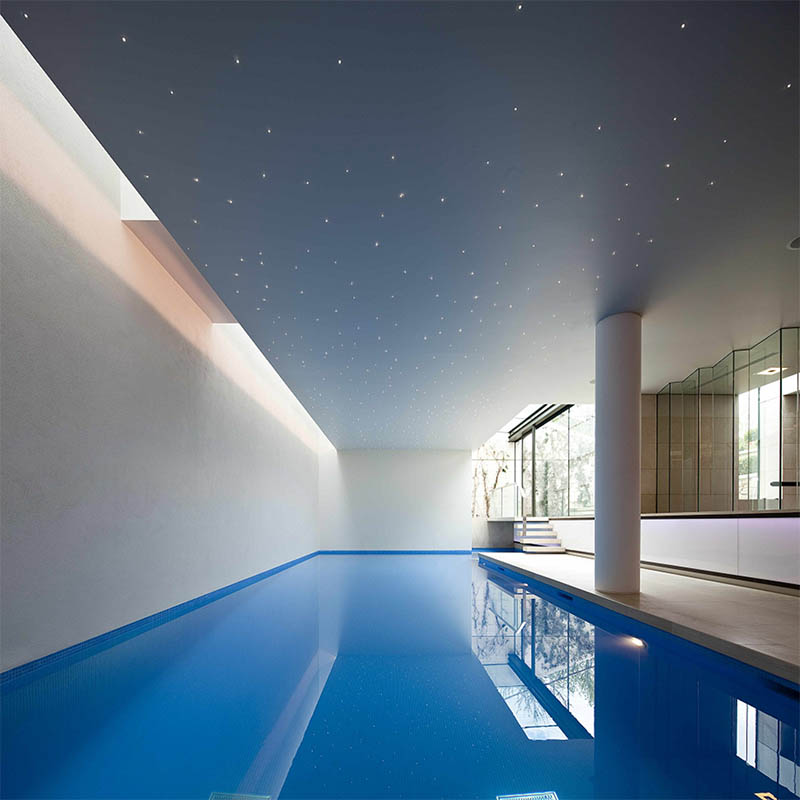 The biggest trend of the 1990s was the automatic pool cover, whereby a retractable cloth would cover the pool with the click of button, keeping the pool at optimum temperature and protected from the elements. As a result, many of the pools we installed moved away from a freeform shape to a rectangular shape, so as to fit the cover, though nowadays we are able to fit this technology to almost any shape and style of pool.
The biggest trend of the 1990s was the automatic pool cover, whereby a retractable cloth would cover the pool with the click of button, keeping the pool at optimum temperature and protected from the elements. As a result, many of the pools we installed moved away from a freeform shape to a rectangular shape, so as to fit the cover, though nowadays we are able to fit this technology to almost any shape and style of pool.
The 1990s also saw the rise of the private tennis and sports club, each requiring a suitably luxurious swimming pool to match. As such, Guncast spent much of the 1990s installing sleek 25m pools for commercial clients, providing the necessary length for swimmers to exercise in, along with Guncast’s trademark touch of glamour.
This was in line with the development of water treatment & disinfection systems and water circulation systems more commonly seen in the commercial environment, for use in the residential environment, providing the ultimate in water quality.
2000s
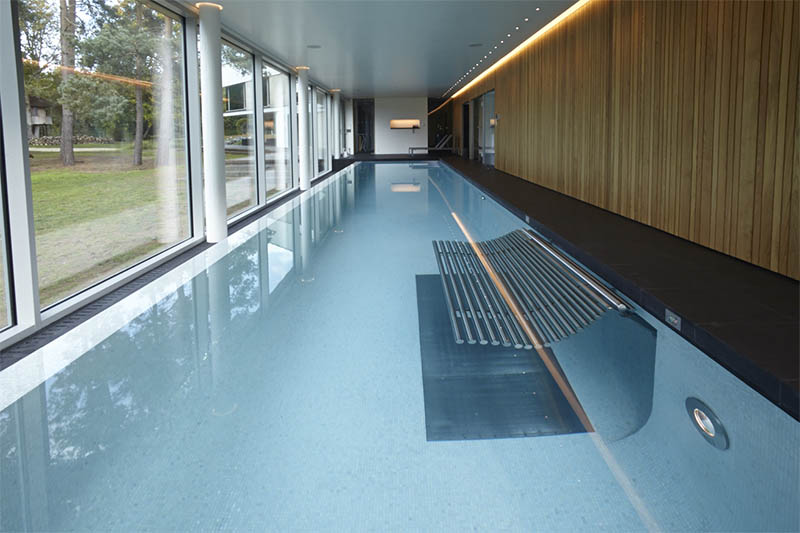 The Noughties saw technology advance at a brilliantly high rate, meeting the ever-growing demand for high-value, wow-factor designs. Moving floor pools arrived, where in the fully up position the pool hall or garden patio could be use for social functions or an exercise suite. Then at the touch of a button the floor would lower through the water, exposing a variable depth pool below, for a water feature or a learner pool, all the way to a regulation depth diving pool. These became instantly popular with city-dwellers wanting a versatile garden space or multifunction basement, whilst managing to maximise the sq/ft value of their property.
The Noughties saw technology advance at a brilliantly high rate, meeting the ever-growing demand for high-value, wow-factor designs. Moving floor pools arrived, where in the fully up position the pool hall or garden patio could be use for social functions or an exercise suite. Then at the touch of a button the floor would lower through the water, exposing a variable depth pool below, for a water feature or a learner pool, all the way to a regulation depth diving pool. These became instantly popular with city-dwellers wanting a versatile garden space or multifunction basement, whilst managing to maximise the sq/ft value of their property.
Other technological advancements meant we could create swimming pools that provided both relaxation and fitness spaces in one. For one client, we installed a stainless steel relaxation bench and bubble pad within an exercise-oriented lap pool, made possible by retracting the bench into the pool wall when not in use.
Another new technological advancement was the Hydro Vitality pool. Equipped with air and water jets, and often including features such as bubble pads, massage benches and powerful massage jets, vitality pools are commonly used for hydrotherapy. Countercurrent swimming is another common feature, involving swimming against powerful jets, with water aerobics, massage and general relaxation all available in one place.
2010s
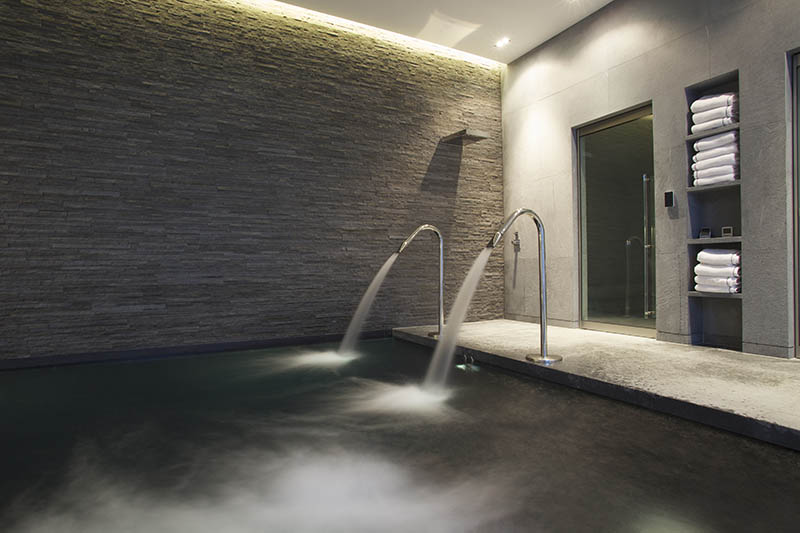 In the 2010s, the wellness industry boomed and really started coming into the home, with significant ramifications for the pool industry. The home spa developed from a pool and a hot tub, to a multi-sensory relaxation experience and thermal journey, complete with saunas, steam rooms, treatment rooms, relaxation areas and more. In 2015, we partnered with KLAFS, the world-leading brand in the design, manufacture and installation of thermal rooms, to meet the huge demand for wellness suites that offer the full spa package. Being able to provide the full range of products, in-house and under one umbrella, has many advantages for the client;
In the 2010s, the wellness industry boomed and really started coming into the home, with significant ramifications for the pool industry. The home spa developed from a pool and a hot tub, to a multi-sensory relaxation experience and thermal journey, complete with saunas, steam rooms, treatment rooms, relaxation areas and more. In 2015, we partnered with KLAFS, the world-leading brand in the design, manufacture and installation of thermal rooms, to meet the huge demand for wellness suites that offer the full spa package. Being able to provide the full range of products, in-house and under one umbrella, has many advantages for the client;
We are able to consider every aspect of the client’s needs, and deliver a completely bespoke, tailored scheme.
The client doesn’t have to worry about managing different suppliers, scope gaps or conflicts of interest, and is safe in the knowledge that one supplier, working within and alongside the rest of the project team, is responsible for the complete pool and wellness suite.
It is more cost effective and provides a more considered end project.
Working in this way also helps to create a more cohesive end design – a crucial point that often differentiates commercial spas from home spas. We are able to deliver a fully-thought through experience, crucial to any wellness project, carefully considering every aspect of the space, from the arrangement of the heating, cooling and relaxation areas, to the placement of drinking facilities and the scent of the rooms.
Tile styles changed in the 2010s too – popular mosaic finishes were replaced with large format porcelain tiles; these tiles could continue to the pool surround and around the pool hall itself. Whilst tiling options were previously limited due to durability factors, advancements in pool water disinfection systems and pool hall environmental control systems, meant clients could choose from a much wider variety of designs. That being said, the classic mosaic finish is still widely used, and is now available in an unlimited variance of size, blend, material and quality.
2020 and beyond…
2020 has so far been unlike any other year to date, leading to changes in how we use and view our home. At Guncast, we have seen a notable rise in demand for swimming pools and wellness, with customers clearly wanting to re-create aspects of their favourite destination boutique hotels, luxury spas and members clubs at home. Clients have had the time to contemplate the concept of the pool they have always wanted, as well as really understand the health and wellbeing benefits of a leisure suite.
Beyond 2020, we are looking forward to the myriad of advancements ahead. As technology and building methods progress, our clients are seeking ever bolder designs, and we are always excited to tackle a new challenge. We are currently preparing to deliver some of our most ambitious projects yet; one project involves an infinity pool that cantilevers over a cliff, with a moving floor and 270° views of the ocean. That being said, we continue to enjoy delivering the quite ordinary and unassuming pool; fitting and tasteful, and always of the highest quality.
Currently for sale with a Guncast
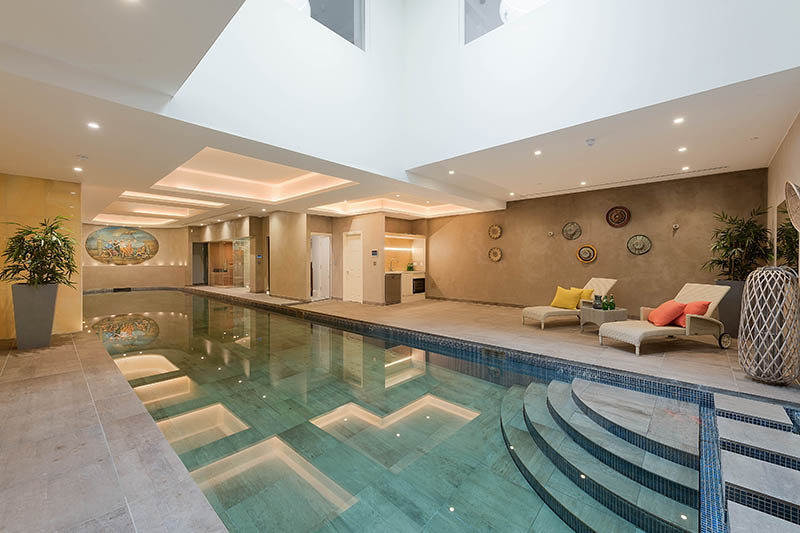 Strutt & Parker is currently marketing a brand new home in Notting Hill, west London, which has been built incorporating a spectacular pool from Guncast. Spread across seven storeys, with over 8,000 sq ft of living space, this newly built detached house in Pembridge Villas has seven bedrooms, six bathrooms, three reception rooms and a private garden. It also comes with secure underground parking for three cars. The 21-metre pool is in the lower basement, accompanied by a sauna and steam room. You’ll need a budget in excess of £15million.
Strutt & Parker is currently marketing a brand new home in Notting Hill, west London, which has been built incorporating a spectacular pool from Guncast. Spread across seven storeys, with over 8,000 sq ft of living space, this newly built detached house in Pembridge Villas has seven bedrooms, six bathrooms, three reception rooms and a private garden. It also comes with secure underground parking for three cars. The 21-metre pool is in the lower basement, accompanied by a sauna and steam room. You’ll need a budget in excess of £15million.